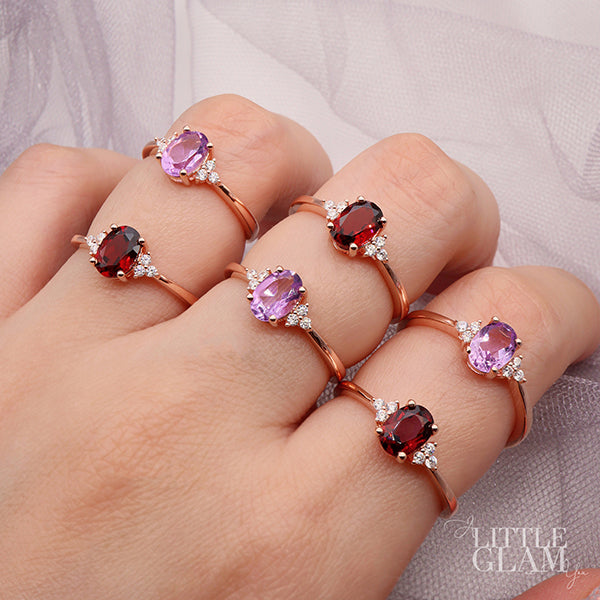Ring Size Guide
| Circumference (MM) | Internal Diameter (MM) | *USA & Canada | Europe | UK & Australia | Hong Kong |
|---|---|---|---|---|---|
| 44.2 | 14.1 | 3 | 44 | F | 6 |
| 46.7 | 14.9 | 4 | 47 | H | 8 |
| 49.3 | 15.7 | 5 | 50 | J | 10 |
| 51.8 | 16.5 | 6 | 52 | L | 13 |
| 54.4 | 17.3 | 7 | 55 | N | 15 |
| 56.9 | 18.1 | 8 | 57 | P | 17 |
| 59.5 | 18.9 | 9 | 60 | R | 20 |
| 62.1 | 19.8 | 10 | 62 | T | 22 |
| 64.6 | 20.6 | 11 | 64 | V | 24 |
| 67.2 | 21.4 | 12 | 67 | X | 27 |
| 69.7 | 22.2 | 13 | 69 | Z | 29 |
2 ways to find Your Perfect Ring Size

Measure an existing ring
1. Select an existing ring that fits the desired finger.
2. Measure the internal diameter of the ring (in mm).
3. Use the above chart to determine your ring size.

Measure your finger
1. Wrap a strip of paper around your finger where you’d like your ring to be.
2. Make sure that the paper is pulled snug to your finger, the tighter the better, to find your best fit.
3. Mark the spot where the paper meets and measure the distance with a ruler (mm).
4. Use the above chart to determine your ring size.

Tips & Tricks
1. Measure your fingers at the end of the day (at that time when the fingers are at their largest).
2. Measure your fingers when they are warm (the fingers are smaller when they are cold).
3. Measure your ring size a few times to avoid any erroneous reading.
4. If you find this measuring process is too complicated for you, we suggest you go to any jewelry shop and ask someone to help you measure your ring size.
